(MENAFN- Asia Times) NEW YORK – Moving factories from China to Mexico is one of the few hot topics in an otherwise listless market, US investment bankers say.
As American hostility to China rises, US corporations scramble to assure the public as well as inquisitive congressional committees that they are moving operations out of the Middle Kingdom to friendlier venues.
It's all a pantomime for political consumption. US imports from Mexico, Vietnam, India and other“friend-shoring” venues depend on imports of Chinese components, according to an Asia Times study of international trade data. China's exports to non-Japan Asia and Latin America are booming, and Chinese companies are investing billions of dollars in Mexico.
The charade permits American politicians to flaunt success in decoupling from China, and gives corporate leaders a chance to display their patriotism – while America's indirect dependence on China's industrial power increases.
“Friend-shoring” venues including India, Vietnam and Mexico show a lockstep relationship between imports from China and exports to the United States. Econometric analysis confirms that this relationship isn't simply the result of a rising trend in both measures.
After correcting for the trend and for serial correlation, regression analysis shows a strong predictive relationship between these countries' imports from China and their exports to the United States.
China's share of international trade is rising steadily. Its export volume (as calculated by the netherlands central planning bureau ) rose 25% since 2018 while the industrial nations' export volume stagnated.
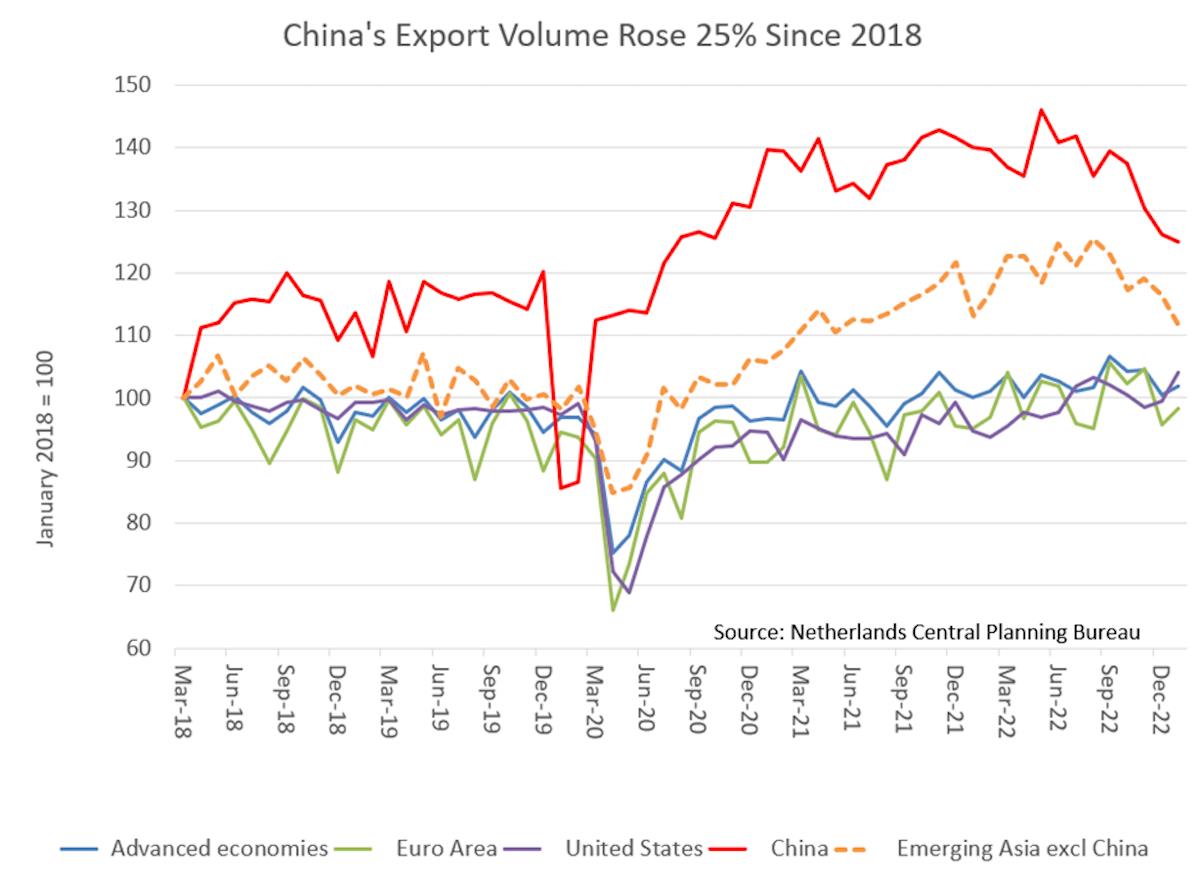
Although Chinese exports to developed markets have fallen since the mid-2020 peak, exports to non-Japan Asia continue to surge. Until 2020, China shipped as much to the US, Europe and Japan as it did to non-Japan Asia. As of February 2023, though, its exports to non-Japan Asia were 50% higher than exports to developed markets. The data below come from China's Statistical Bureau.

The big driver of China's export growth is Southeast Asia, especially Vietnam and Singapore.
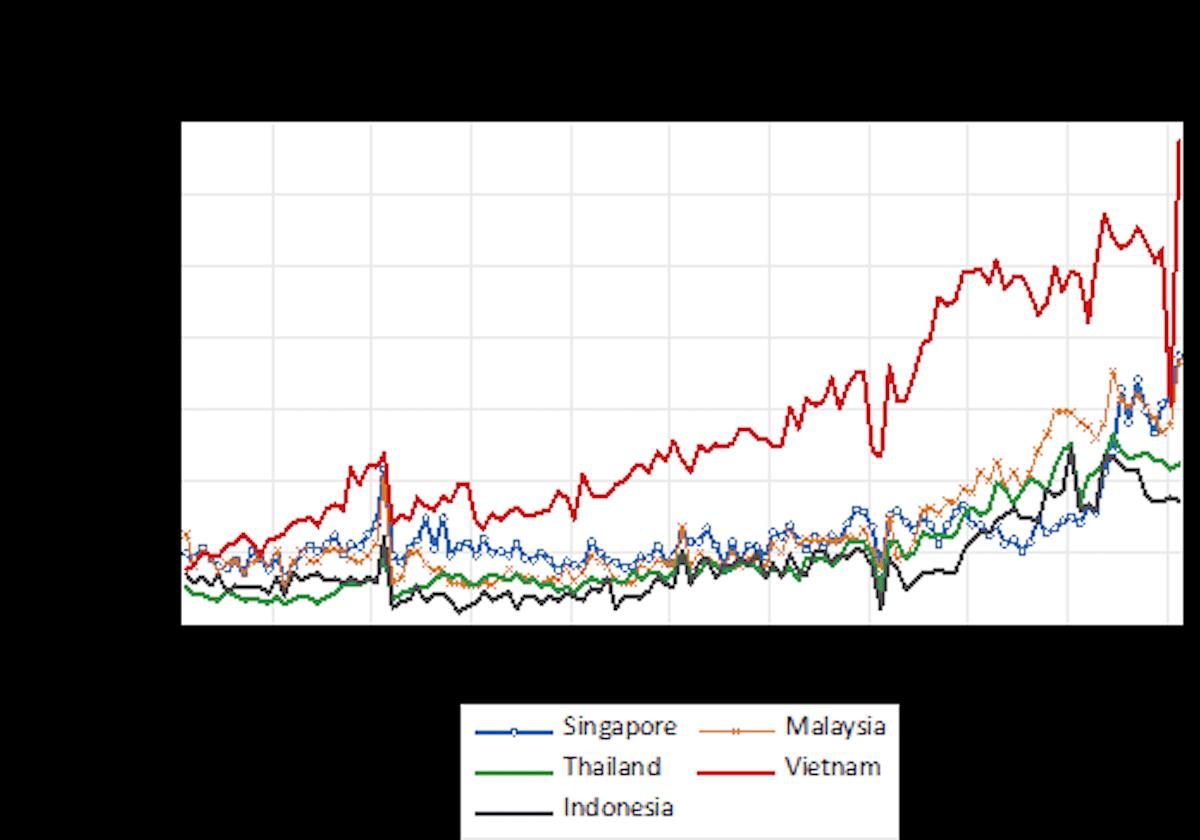
China's exports to other major venues in Asia, especially South Korea, have also surged.
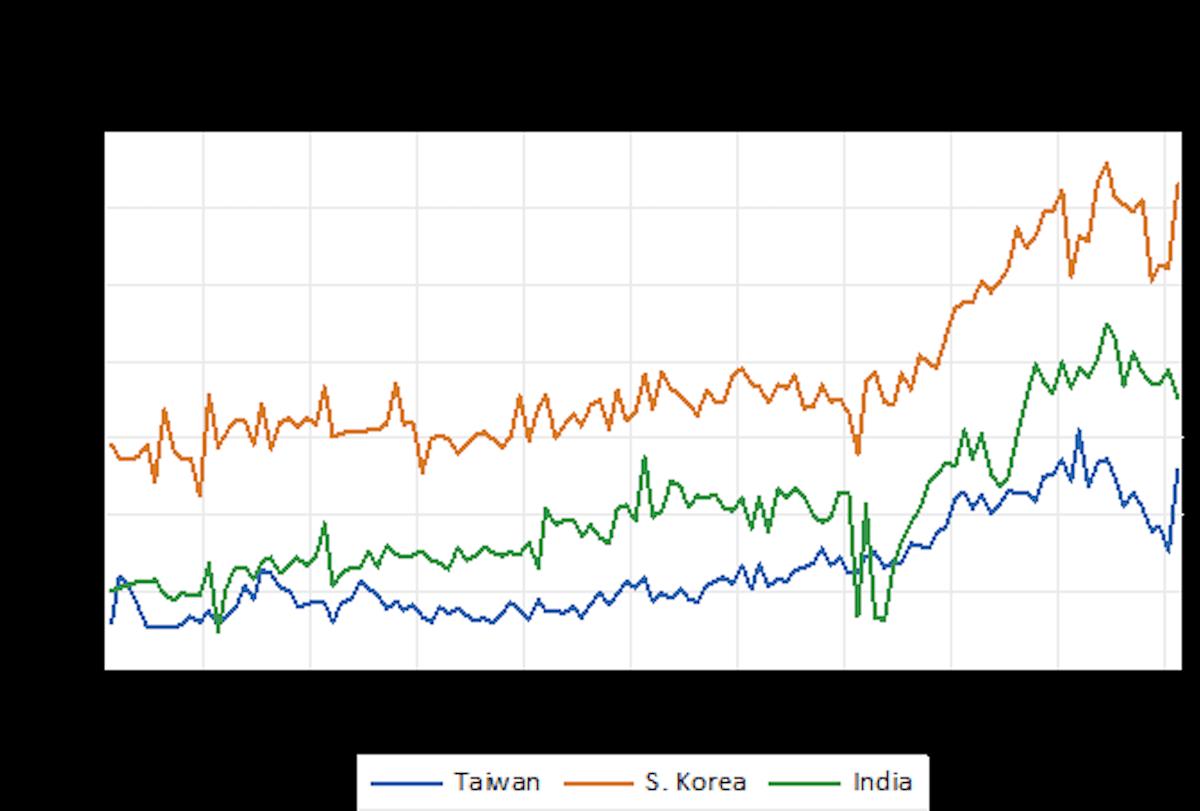
China's exports to Russia, meanwhile, have doubled in the past year, as Russia replaces sanctioned imports from the West with Chinese products, notably automobiles.
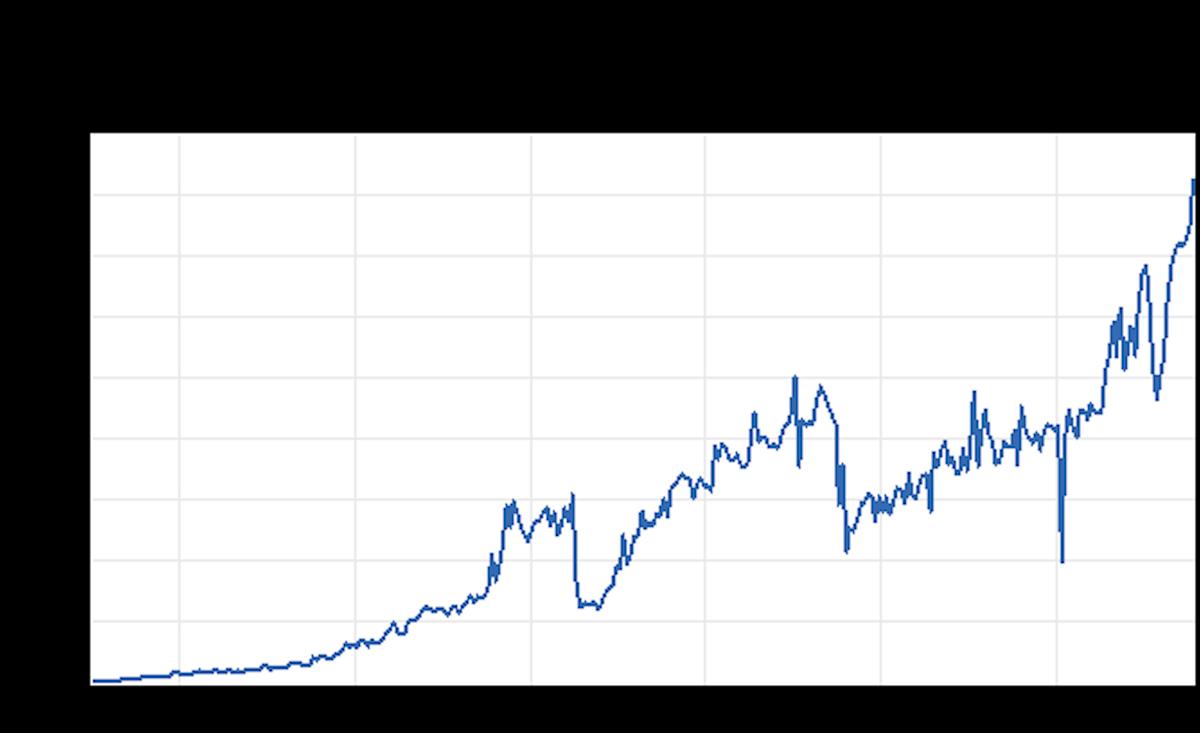
There are two key drivers of China's burgeoning exports to non-Japan Asia.
The first is infrastructure, digital as well as physical (“digital infrastructure propels new se asian tigers ,” Asia Times, February 3, 2023). The second is export of components that are reassembled into finished products destined for the United States.
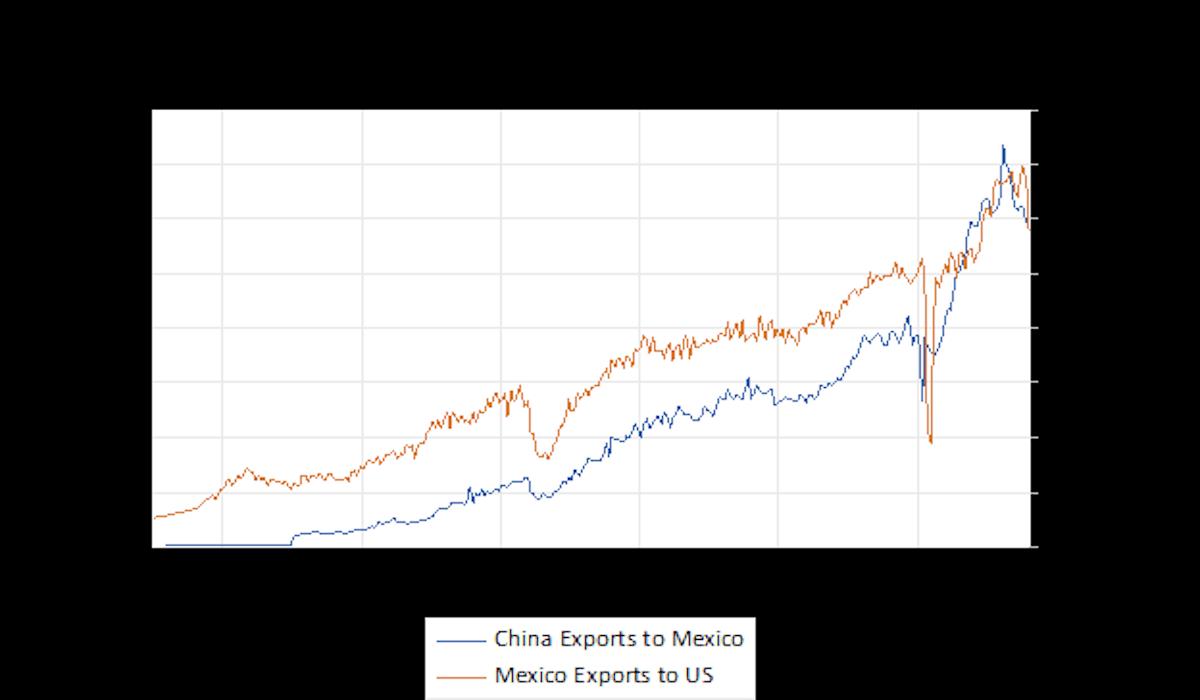
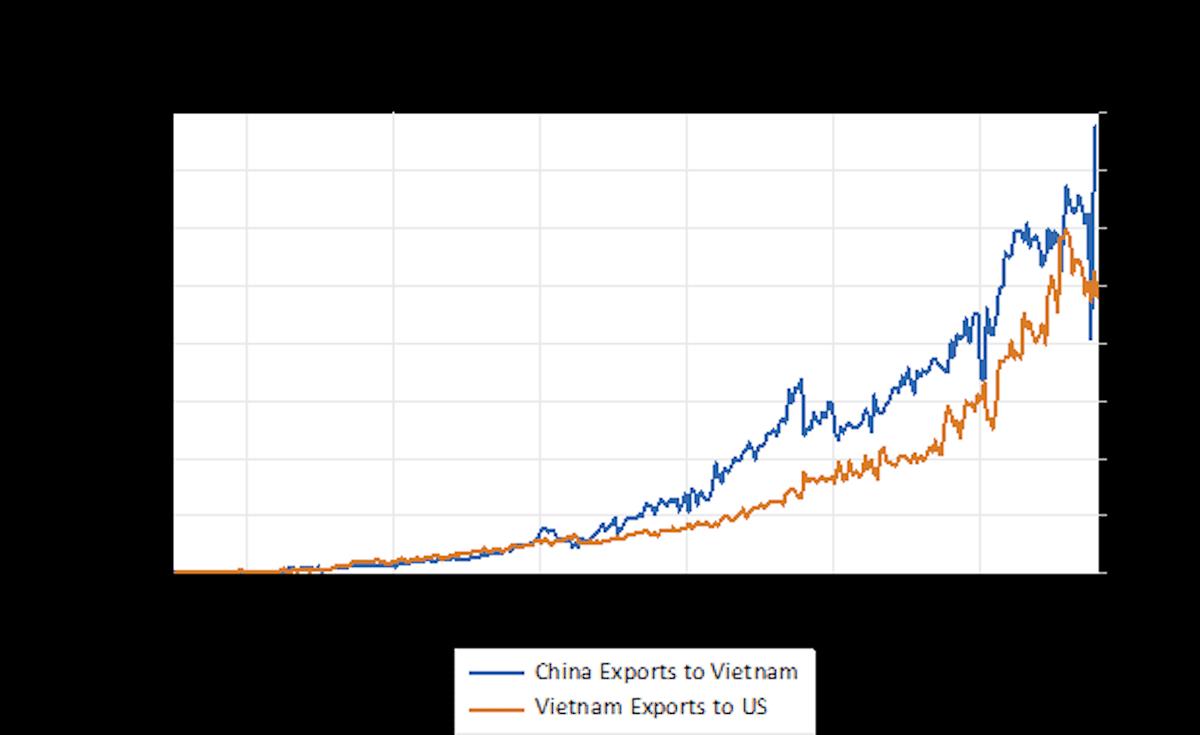
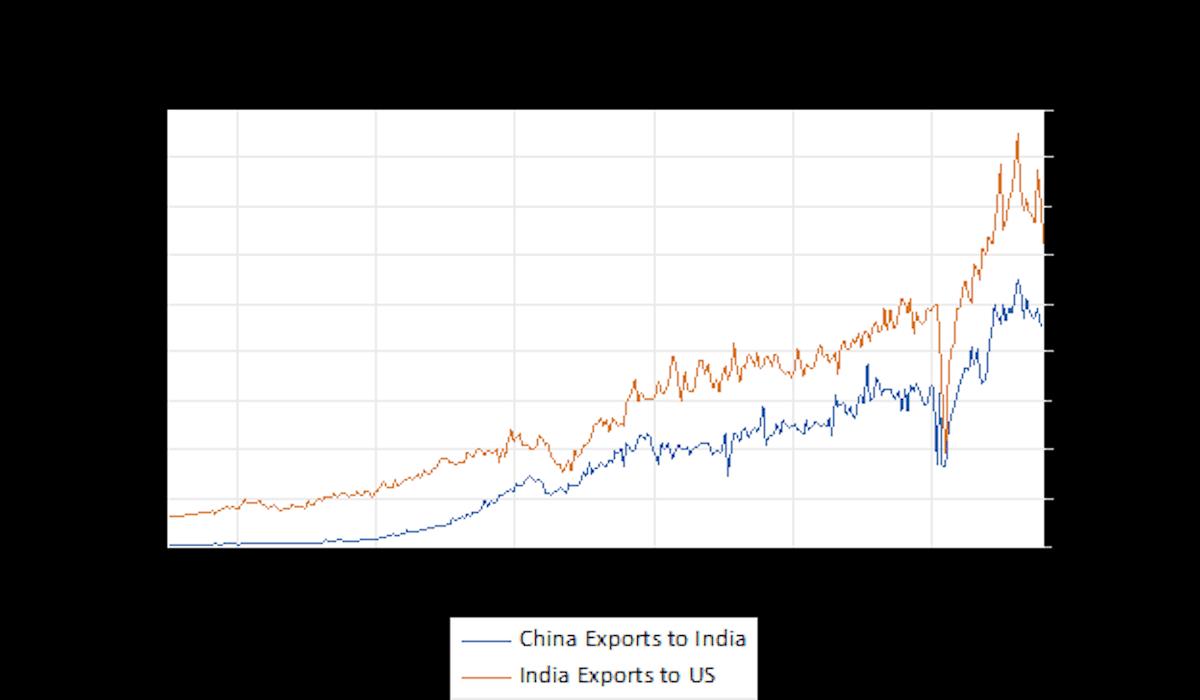
Visual impressions, to be sure, can be misleading. It's possible that Chinese exports to Mexico, India and Vietnam rose at the same time that those countries' exports to the United States were rising, simply because trade, in general, was rising. Was it simply a coincidence?
Econometric analysis shows that it's extremely unlikely that the link between Chinese exports to“friend-shoring” countries and their exports to the US was coincidental.
The regression below conducted with the Eviews econometrics platform includes a trend variable (expressed as a second-degree polynomial) to control for the overall growth of trade. It also includes the autoregressive variable AR(1) and the moving average error variable MA(1).
These variables control for serial correlation, namely the tendency of a trending series to keep moving in the same direction. Think of two balls bouncing down a hill. Their descent is independent (both are controlled by the force of gravity), even though they appear correlated. The autoregressive and moving average variables correct for this effect.
Even after including a trend variable and correcting for serial correlation, the t-statistic (the coefficient divided by the standard error) for China's exports to Mexico lagged two months is about 13. Econometrics typically considers a t-statistic of 2 to be highly significant.
Econometric results don't constitute proof, but they do indicate that it is extremely improbable that China's exports to Mexico are not linked to Mexico's imports from China.

We obtain very similar results for India and Vietnam.
Follow David P Goldman on Twitter at @davidpgoldman
Like this:Like Loading...




























Comments
No comment